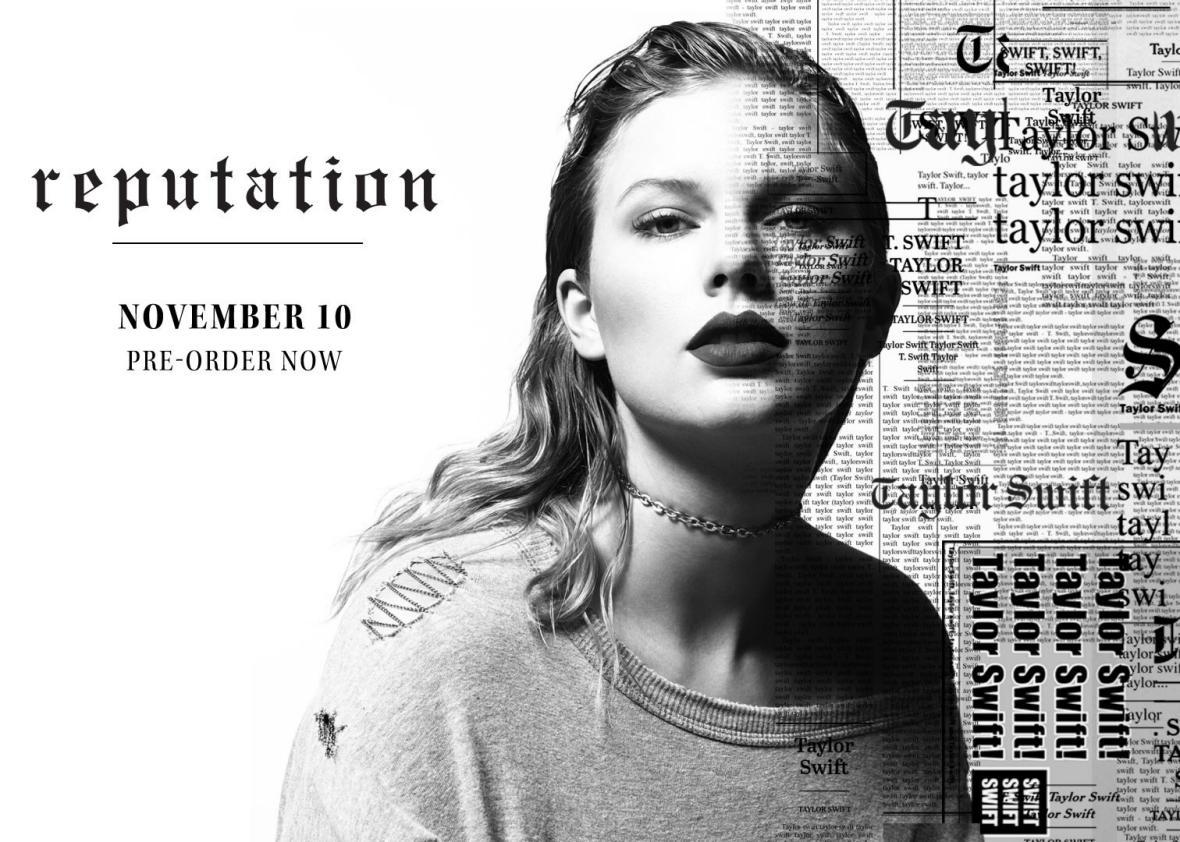Whenever Taylor Swift drops a new single, her fans are quick to scour the lyrics for references to real-life beefs and beaus. Her work has been reliably, if loosely, autobiographical throughout her career, down to the secret messages she leaves with capitalized letters in her liner notes.
Well, viewing the much-hyped song Swift released late Thursday night, “Look What You Made Me Do,” through an autobiographical lens is a real bummer. The song elevates Swift’s pitiful spoken-word capabilities at the expense of her immense songwriting talent, forcing her to almost rap the chorus of a tune that describes a pathetic existence I wouldn’t wish on my worst enemy.
It sounds like her grudges occupy so much of her psychic space that there’s hardly room for a personality, let alone anything resembling joy. “The world moves on, another day, another drama drama,” she sings. “But not for me, not for me—all I think about is karma.” While others forgive, forget, and move on to more fulfilling relationships, Swift is consumed by resentment, unable to see past those who’ve wronged her until they suffer. Instead of making a life on her own terms, she follows her nemeses around, obsessing over their slights long after they’ve forgotten them, while she waits for her revenge to chill.
Smart people have said that forgiveness offers a greater benefit to the forgiver than the forgivee, a lesson Swift would have us believe she has yet to learn. “I got a list of names, and yours is in red, underlined” she sings in “Look What You Made Me Do.” There’s another young woman with a list of names in our current pop-culture milieu, and she’s currently sabotaging her relationship with one of her few surviving family members over an affront that’s been gathering dust for several years. Arya Stark’s preoccupation with revenge makes for good, action-packed TV. In real life, the immediate gratification of vengeance soon evaporates to leave a gaping hole, a welcoming nest for a snake.
Like Stark, Swift’s self-isolation seemed empowered at first. They don’t need anybody but themselves, and their sharp tongues (or swords) are powerful weapons against those who cause them harm. But the line between self-preservation and self-destruction is thin. Swift makes it clear in “Look What You Made Me Do” that she’s crossed it. When she sings that “the world moves on” while she’s still waiting to get her payback, she’s saying that she stands apart from the world; it’s her against everyone, with no one on her side. “I don’t trust nobody and nobody trusts me,” she sings proudly. It sounds dangerously close to “Nobody likes me / everybody hates me / guess I’ll go eat worms.”
The lyric video Swift dropped along with the song has a paranoid vibe, with messages scrawled on leafless trees, shifty eyes in rearview mirrors, and spray-painted threats inside dark tunnels. There are multiple mentions of Swift rising from the dead and killing old versions of herself, as if every time she’s hurt, she has to create a whole new person to contain the growing mass of fermenting rage that’s chomping away at her insides.
Speaking of which: The video illustrates the chorus of “Look What You Made Me Do” with an ouroboros. Traditionally, the snake eating its own tail is a symbol of regeneration, an infinite circle of life. Swift will always rise from the grave or bounce back from hardships, the image seems to say. But the snake is also nourishing itself on its own flesh. “Ooh, look what you made me do,” Swift sings as the animal annihilates itself. She has no agency, no ability to step away from the edge of the chasm her self-destructive impulses have led her to.
If this song isn’t written as an earnest description of her mental state—if, instead, it’s a send-up of the image the media has created for Swift, which, to be fair, is a real possibility—it’s a pretty lame one. “Blank Space” worked as a light-hearted tribute to Swift’s tabloid reputation as a man-eating cyclone of drama; “Look What You Made Me Do” is neither fun nor funny enough to make for a satisfying meta riff on her reputation. The narrator sounds more bitter than self-aware and, given Swift’s history of well-placed disses, the story sounds too close to the truth.
